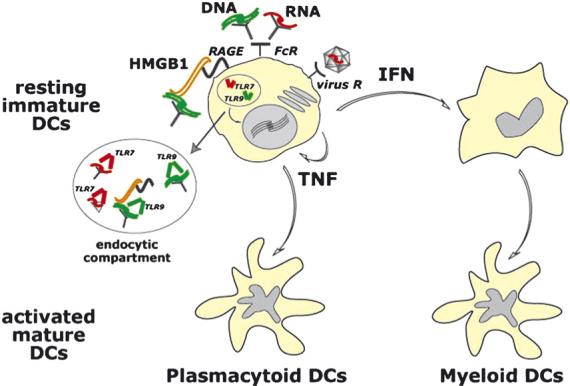Fig. 4.

Nucleic acids regulate activation of DC subsets. Interaction of resting immature pDCs with nucleic acids leads to a cascade of cytokine secretion including high amounts of type I IFN as well as TNF. This leads to generation of activated (mature) DCs derived from pDCs, via autocrine TNF, and from immature mDCs, via paracrine type I IFN, both of which drive T and B cell responses. Nucleic acids, abundant in autoimmune diseases such as SLE, can be presented to pDCs via several pathways such as i) immune complexes containing double stranded DNA (green) or single stranded RNA (red) which are taken up via Fc receptors; ii) viruses (for example RNA viruses) taken up via surface receptors; and iii) complexes of nuclear protein HMGB1 bound to DNA-containing immune complexes which are taken up by pDCs via the interaction of HMGB1 with surface protein of the immunoglobulin superfamily RAGE. Ultimately, captured nucleic acids are targeted to endocytic compartments where they bind TLR7 (RNA) or TLR9 (DNA) resulting in activation of signalling pathways that trigger transcription of inflammatory cytokines.
